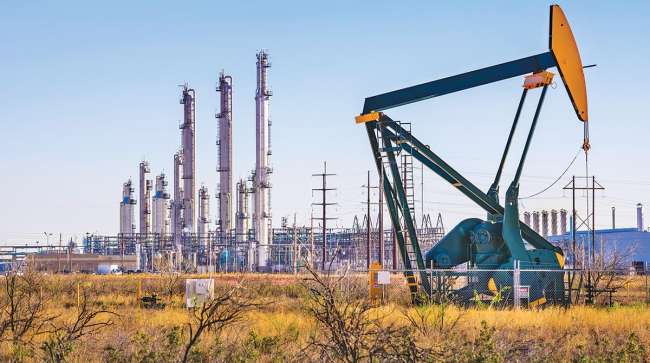Global Oil Demand Hits Record and Prices May Climb, IEA Says

[Stay on top of transportation news: Get TTNews in your inbox.]
Global oil demand has surged to a record amid robust consumption in China and elsewhere, threatening to push prices higher, the International Energy Agency said.
World fuel use averaged 103 million barrels a day for the first time in June and may soar even higher in August, the agency said in a report. As Saudi Arabia and its partners constrict supplies, oil markets are tightening significantly.
“Oil demand is scaling record highs, boosted by strong summer air travel, increased oil use in power generation and surging Chinese petrochemical activity,” the Paris-based IEA said. “Crude and products inventories have drawn sharply” and “balances are set to tighten further into the autumn.”
Oil this week touched a six-month high above $88 a barrel in London amid the post-pandemic resurgence in fuel use and supply restraint by the Saudi-led OPEC+ alliance. Brent futures eased back a little to trade below $87 on Aug. 11.
World oil demand is scaling record highs, boosted by summer air travel, increased oil use for power generation & surging petrochemical activity in China
With deepening OPEC+ supply cuts, global markets are set to continue tightening through the fall ⬇️ https://t.co/k6shRxYYM4 — International Energy Agency (@IEA) August 11, 2023
The plunge in world oil demand during the COVID-19 crisis three years ago spurred speculation that consumption may be close to a peak as remote working gained in popularity and governments sought to shift away from fossil fuels to avert catastrophic climate change.
But the IEA data shows that, despite growing evidence of a warming planet shown by this summer’s heat waves and wildfires in the Northern Hemisphere, oil use is stronger than ever. China will account for 70% of this year’s demand growth, but surprisingly resilient developed nations added to the latest surge.
The energy transition looks set to have an impact next year, when global demand growth will roughly halve to 1 million barrels a day due to improved vehicle efficiency and the adoption of electric cars, the IEA said.

Host Michael Freeze clarifies the differences between predictive and preventive maintenance. He gives fresh commentary on everything from how enhanced connectivity boosts your preventive maintenance plans to what predictive possibilities AI can offer your shop. Tune in above or by going to RoadSigns.ttnews.com.
But in the meantime, world markets are tightening, leaving oil inventories in developed nations about 115 million barrels below their five-year average, according to the report. Global stockpiles are set to deplete by a hefty 1.7 million barrels a day in the second half of the year, and preliminary data appears to confirm declines in July and August, the IEA said.
Major consuming nations have criticized the Saudis and their allies in OPEC+ for constricting supplies, warning that a renewed inflationary spike would squeeze consumers and endanger the global recovery. Nonetheless, Riyadh has said it could deepen current cutbacks if necessary.
Output from the Organization of Petroleum Exporting Countries and its partners plunged last month to near a two-year low as the Saudis implemented a unilateral cut of 1 million barrels a day. Russia, a fellow member of the coalition, is also reducing exports.
The need for OPEC’s crude during the fourth quarter looks a little less pressing compared with last month’s report, as a slightly weaker demand outlook for the period and a little extra supply elsewhere shave the requirement for OPEC production by 400,000 barrels a day.
Want more news? Listen to today's daily briefing above or go here for more info
Nonetheless, an average of 29.8 million barrels a day is needed from the cartel’s 13 members between October and December — far more than the 27.9 million a day they pumped in July, according to the IEA.
“If the bloc’s current targets are maintained, oil inventories could draw” significantly, the agency warned, “with a risk of driving prices still higher.”




